Human Centric Lighting for Offices: Impact, Benefits, and System Development

Introduction
- Why do offices need human-centric lighting?
- Understanding Human Centric Lighting
- The Impact of Human Centric Lighting in Office Environments
- The Advantages of Human Centric Lighting for Offices
- How to Implement a Human Centric Lighting System in Offices?
- Case Studies: Companies Implementing Human Centric Lighting
- The Future Trends of Human Centric Lighting Systems in Offices
- Human Centric Lighting Solutions by UPRtek
- Need Expert Consultation on Human Centric Lighting?
Why do offices need human-centric lighting?
In modern work environments, lighting is more than just a functional necessity—it directly influences employees’ performance, health, and overall workplace experience. Traditional office lighting systems, which often prioritize energy efficiency and brightness, may not fully address human biological needs. As a result, prolonged exposure to improper lighting can contribute to fatigue, eye strain, and decreased productivity.
This growing awareness has led to the development of human centric lighting for offices, a lighting approach that synchronizes with human circadian rhythms to create healthier and more dynamic workspaces. By utilizing advanced lighting technologies, these systems can adjust brightness and color temperature throughout the day to promote alertness, reduce stress, and enhance well-being.
Furthermore, the increasing demand for human centric lighting products has driven innovation in office lighting design. Companies are now integrating adaptive lighting solutions that not only improve employee satisfaction but also contribute to a more productive and comfortable workspace. As businesses continue to invest in workplace well-being, human centric lighting is becoming a key element in optimizing office environments.
Understanding Human Centric Lighting
Human Centric Lighting refers to lighting solutions designed to benefit human health and well-being by simulating the dynamic variations of natural daylight. By adjusting factors such as intensity and color temperature throughout the day, HCL supports our circadian rhythms—the internal clocks that regulate sleep-wake cycles and other bodily functions. For instance, exposure to bright, cool light in the morning can boost alertness and concentration, while warmer, dimmer light in the evening promotes relaxation and prepares the body for restful sleep.
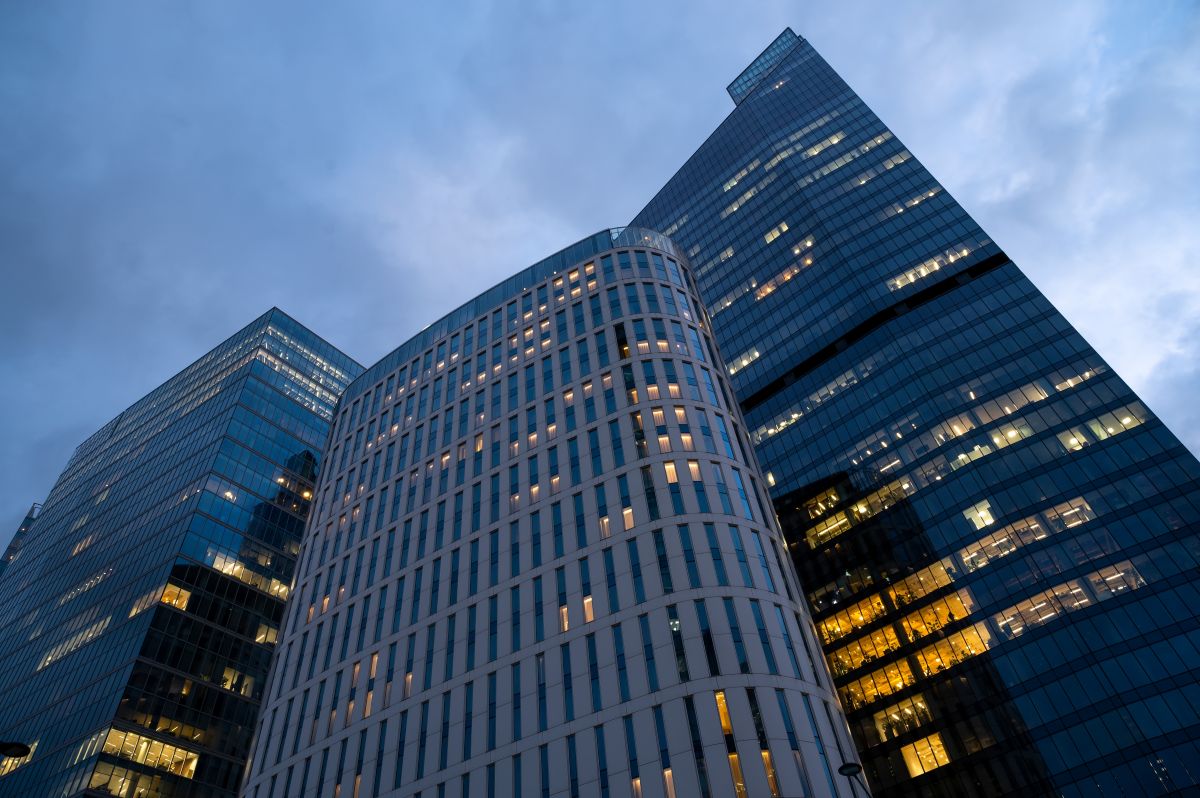
The Impact of Human Centric Lighting in Office Environments
While human centric lighting for offices is recognized for its benefits, its implementation comes with challenges that organizations must consider. From technical complexities to cost implications, transitioning from conventional lighting to an adaptive human centric lighting system requires strategic planning.
Challenges of Implementing Human Centric Lighting in Offices
- High Initial Costs:
Investing in human centric lighting products involves significant upfront expenses, including tunable LED fixtures, smart lighting control systems, and installation costs. While long-term energy savings and employee productivity gains can offset these costs, some companies may find the initial investment challenging. - Complex System Integration & Maintenance:
Unlike traditional static lighting, a human centric lighting system requires dynamic adjustments based on daylight levels and circadian rhythms. Integrating these systems into existing office infrastructure can be technically demanding, requiring specialized expertise and ongoing maintenance. - Employee Adaptation & Potential Resistance:
Not all employees may respond positively to human centric lighting for offices immediately. Some individuals may prefer static lighting, and sudden adjustments in brightness or color temperature might cause discomfort at first. Companies may need to educate staff and allow for gradual adaptation to optimize user experience. - Standardization & Regulatory Compliance:
Since human centric lighting products are still evolving, standardized guidelines and regulations vary across different regions. Businesses adopting HCL must ensure compliance with safety standards, energy efficiency policies, and workplace lighting regulations to avoid legal complications.
( Read more: How WELL Certification Enhances Building Environments for Better Health and Well-being?)
By addressing these challenges, companies can make informed decisions when adopting a human centric lighting system, ensuring that the transition is both effective and beneficial for employees and overall business operations.

The Advantages of Human Centric Lighting for Offices
Unlike traditional lighting, human centric lighting for offices is designed to enhance both workplace performance and employee well-being. By dynamically adjusting light intensity and color temperature, these systems offer a range of practical advantages that make them an ideal solution for modern office environments.
1. Boosting Employee Performance and Engagement
- Optimized Focus & Alertness:
A human centric lighting system helps employees stay energized throughout the day by mimicking natural daylight patterns. Studies have shown that exposure to dynamic lighting improves cognitive function and concentration levels, reducing afternoon fatigue. - Reduced Sick Leave & Absenteeism:
Employees working in well-lit environments with proper circadian lighting experience fewer headaches, less eye strain, and better sleep quality, leading to fewer sick days.
2. Enhancing Workplace Comfort & Mental Well-being
- Stress & Mood Regulation:
Dynamic lighting, which adapts to different tasks and times of day, creates a more pleasant and calming atmosphere, reducing workplace stress. Human centric lighting for offices not only provides functional lighting but also improves emotional well-being. - Increased Job Satisfaction:
Employees report feeling more comfortable and motivated in offices equipped with a well-designed lighting system that supports their biological needs, leading to better job performance.
3. Energy Efficiency & Sustainability
- Smart Adaptive Lighting Reduces Energy Waste:
A human centric lighting system automatically adjusts to daylight levels and occupancy, helping businesses cut down on electricity costs and carbon footprint. - LED-based Solutions Last Longer:
Unlike traditional fluorescent lighting, modern tunable LED solutions used in human centric lighting products have longer lifespans, reducing maintenance costs over time.
4. Increased Office Flexibility & Design Adaptability
- Customizable Lighting for Different Work Areas:
Open offices, meeting rooms, and relaxation spaces all require different lighting settings. Smart lighting solutions allow for customized lighting zones that cater to specific tasks. - Seamless Integration with Smart Office Technologies:
Human centric lighting products can be linked to IoT-based automation, allowing companies to create fully connected workspaces with lighting that adapts to real-time needs.

How to Implement a Human Centric Lighting System in Offices?
Following a Structured Approach
Implementing a human centric lighting system in office environments requires a strategic approach that considers lighting design, employee needs, and building regulations.
One widely recognized standard for workplace wellness is the WELL Building Standard, developed by the International WELL Building Institute (IWBI).
The WELL Certification framework guides businesses in creating healthier indoor environments, with lighting as one of its key focus areas. WELL v2 outlines specific requirements such as circadian lighting design, daylight exposure, and glare control, ensuring that workplaces prioritize both visual comfort and employee well-being.
By following these principles, companies can successfully integrate human centric lighting for offices while meeting global health standards.
Recommended Steps for Implementation
- Assess Current Office Lighting Conditions
- Conduct a lighting audit to measure brightness levels, color temperature, and daylight exposure.
- Identify areas that need improvement based on WELL lighting standards.
- Design a Human Centric Lighting System Based on WELL Guidelines
- Implement tunable LED lighting solutions to simulate natural daylight variations.
- Adjust color temperature and intensity to align with employees’ circadian rhythms.
- Integrate Smart Control Systems for Dynamic Adjustments
- Use automated lighting controls that respond to time of day, occupancy, and daylight availability.
- Ensure manual override options so employees can personalize their workspace lighting.
- Pilot Test in Select Office Areas
- Before a full-scale rollout, test human centric lighting products in meeting rooms or designated workspaces.
- Collect employee feedback and make adjustments based on real-world usage.
- Monitor, Optimize, and Seek WELL Certification
- Regularly evaluate lighting effectiveness using energy efficiency data and employee satisfaction surveys.
- Consider pursuing WELL Certification to align with global best practices for office wellness.
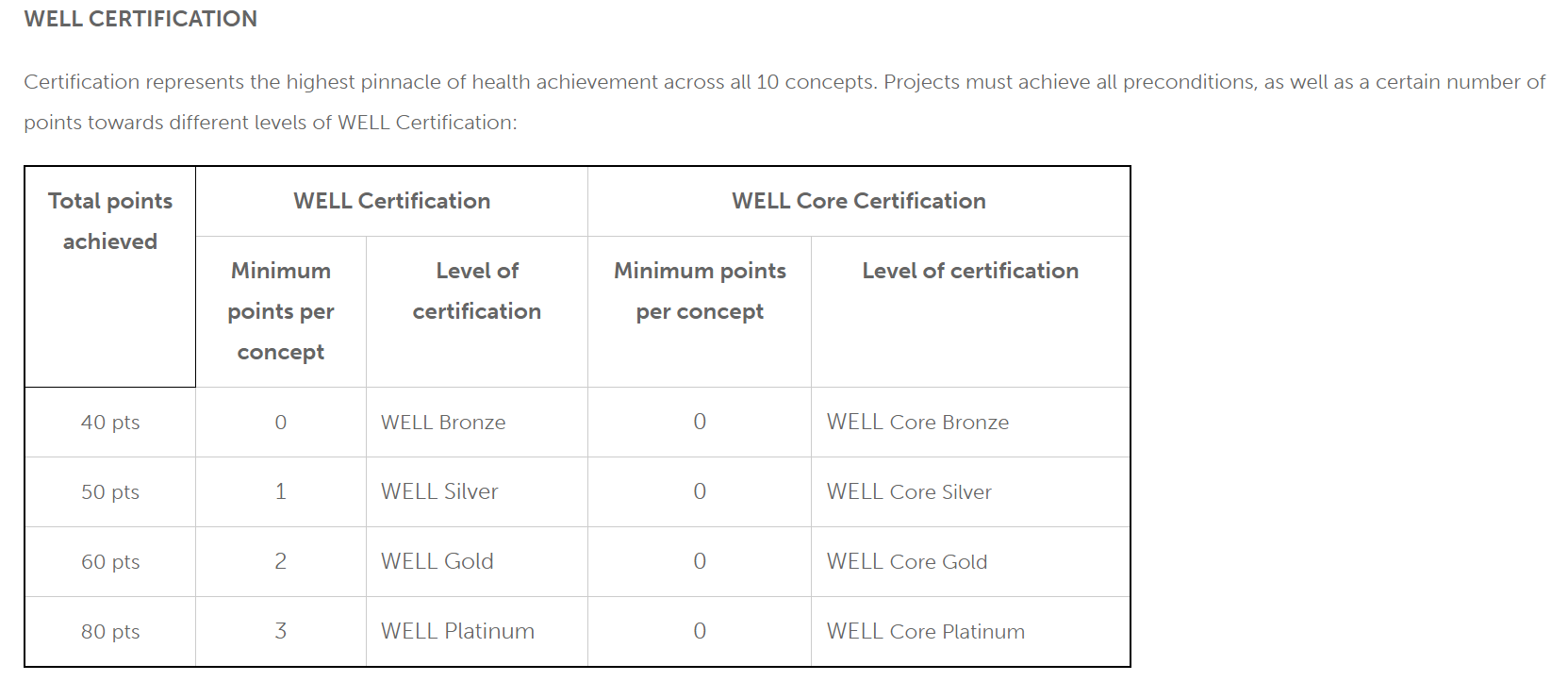
WELL Certification and WELL Core Certification levels
Case Studies: Companies Implementing Human Centric Lighting
1. Deloitte Amsterdam – The Edge
The Edge, an innovative, 40,000 m2, multi-tenant office building in the Zuidas business district in Amsterdam, is known for its innovative and sustainable lighting system, which enhances both employee well-being and energy efficiency.
- Smart Sensor-Based Controls:
The human centric lighting system uses motion sensors and daylight tracking to automatically adjust brightness and energy consumption. - Optimized Work Environment:
Employees benefit from lighting that adapts to their activities, providing comfortable and efficient illumination throughout the day. - Sustainability & Energy Savings:
The lighting system contributes to The Edge’s 80% reduction in electricity use, making it one of the most energy-efficient office buildings in the world.

Deloitte Amsterdam – The Edge
2. CABR Headquarters – China Academy of Building Research
The CABR Headquarters in China has adopted a human centric lighting system to improve energy efficiency and employee productivity.
- Adaptive Daylight Integration:
The system automatically adjusts lighting based on natural light levels, ensuring optimal illumination while reducing energy waste. - Personalized Employee Control:
Employees can adjust their workspace lighting via a mobile app, allowing for a more comfortable and customized experience. - Smart Energy Management:
Integrated IoT-based lighting solutions optimize energy use while maintaining high-quality lighting standards for office workers.
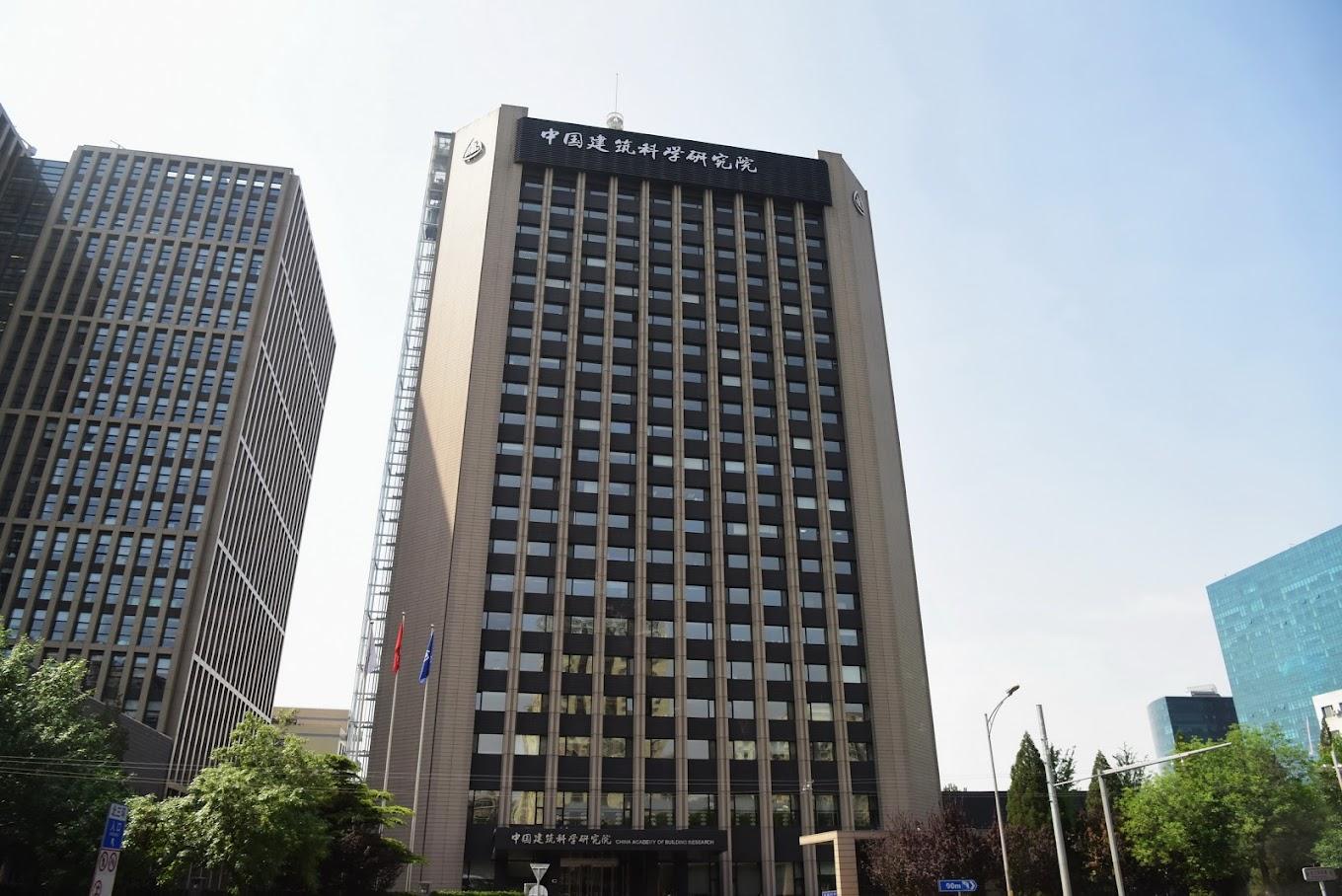
China Academy of Building Research
The Future Trends of Human Centric Lighting Systems in Offices
As businesses continue prioritizing employee well-being and sustainability, the market for human centric lighting systems is expanding rapidly. According to Grand View Research, the global human centric lighting market was valued at $3.45 billion in 2023 and is expected to grow at a CAGR of 29.4% between 2024 and 2030, reaching $19.83 billion by 2030. This surge is driven by advancements in IoT-based lighting controls, AI-driven automation, and energy-efficient smart lighting technologies. (Grand View Research)
As companies embrace smart office solutions, the following key trends are shaping the future of human centric lighting for offices:
1. AI and IoT-Driven Smart Lighting Control
- AI-powered human centric lighting systems enable real-time adjustments based on employee schedules, natural daylight levels, and workspace occupancy, ensuring optimized lighting conditions.
- IoT-enabled lighting solutions reduce energy waste by automatically optimizing brightness and color temperature, leading to up to 60% energy savings.
- Market Insight: AI-integrated lighting systems are projected to see significant adoption across North America and Europe, particularly in corporate office buildings.
Example: Smart office buildings using AI-driven lighting could adjust intensity and warmth based on employee moods and productivity levels, enhancing focus during meetings and relaxation in break areas.
2. Ultra-Personalized Workspaces with Adaptive Lighting
- Future human centric lighting products will allow employees to customize workspace lighting through mobile apps, voice assistants, or biometric sensors, providing greater control and comfort.
- Desk-level lighting customization will become more common, where each workstation adapts to an individual’s circadian rhythm, work habits, and personal lighting preferences.
- Market Insight: Companies investing in hybrid workspaces and employee-centric office designs are increasingly adopting adaptive lighting solutions to improve workplace satisfaction.
Example: Smart desks equipped with human centric lighting could recognize an employee and automatically adjust brightness and color temperature upon arrival.
3. Integration with Sustainable & Energy-Efficient Building Standards
- Human centric lighting systems are becoming a core component of green building certifications (LEED, WELL, BREEAM), driving businesses toward more sustainable and energy-efficient office designs.
- Daylight harvesting technologies will be widely integrated, where sensor-based lighting adjusts based on natural light availability, optimizing energy consumption.
- Market Insight: North America is projected to lead human centric lighting adoption, growing at a CAGR of 29.2% from 2024 to 2030, as companies focus on eco-friendly lighting solutions aligned with corporate ESG goals.
Example: Smart buildings will integrate real-time energy analytics to monitor lighting efficiency and automatically optimize electricity usage based on occupancy and daylight levels.
4. Enhanced Focus on Employee Well-being & Mental Health
- Human centric lighting for offices is evolving beyond just visual comfort, increasingly addressing mental well-being, stress reduction, and cognitive function.
- Offices will introduce dynamic lighting scenarios that adjust brightness and color temperature for productivity bursts, creative thinking, and relaxation periods.
- Market Insight: Research suggests that circadian-based lighting conditions can improve employee productivity by up to 12%, helping companies enhance workplace efficiency.
Example: Biophilic lighting designs, inspired by nature, will simulate subtle daylight shifts or tree canopy light diffusion, creating a calming and stress-reducing office environment.
5. Expansion of Hybrid Work Models & Modular Lighting Solutions
- As hybrid work models become the norm, human centric lighting products must adapt to flexible work environments, supporting employees in both home and corporate offices.
- Wireless and modular lighting solutions will allow hot-desking employees to experience consistent circadian-supportive lighting, regardless of where they work.
- Market Insight: Cloud-connected human centric lighting systems are expected to grow in demand, enabling businesses to remotely manage and automate office lighting, reducing energy costs and enhancing employee comfort.
Example: Employees could sync their preferred lighting settings across home and office workstations, ensuring a seamless and personalized experience.
The future of human centric lighting for offices is moving toward greater personalization, AI-driven automation, energy efficiency, and employee well-being. As companies continue investing in smart office ecosystems and sustainable workplace solutions, human centric lighting systems will play a crucial role in enhancing productivity, reducing operational costs, and creating healthier work environments.
Human Centric Lighting Solutions by UPRtek
Ensuring Compliance with WELL Certification & Circadian Lighting Standards
As discussed earlier, several building certification programs help businesses create healthier, more sustainable workplaces. One of the most recognized frameworks is the WELL Building Standard, which provides comprehensive lighting requirements to enhance employee well-being, productivity, and health.
WELL certification covers multiple aspects of lighting design, including:
- ✔ Glare Control (to prevent eye strain and discomfort)
- ✔ Color Quality (ensuring lighting fidelity and appropriate spectral composition)
- ✔ Circadian Lighting Design (supporting biological rhythms through light exposure)
One of the key metrics used to evaluate circadian lighting is Melanopic Equivalent Daylight Illuminance (melanopic EDI), which measures how effectively lighting supports the human biological clock. This is where the UPRtek MK350S Premium provides an accurate and efficient solution.
Measuring Melanopic EDI with UPRtek MK350S Premium
To comply with WELL’s Circadian Lighting Design requirements (L03), buildings must meet:
- Tier 1: Minimum of 136 melanopic EDI (lux).
- Tier 2: Minimum of 250 melanopic EDI (lux).
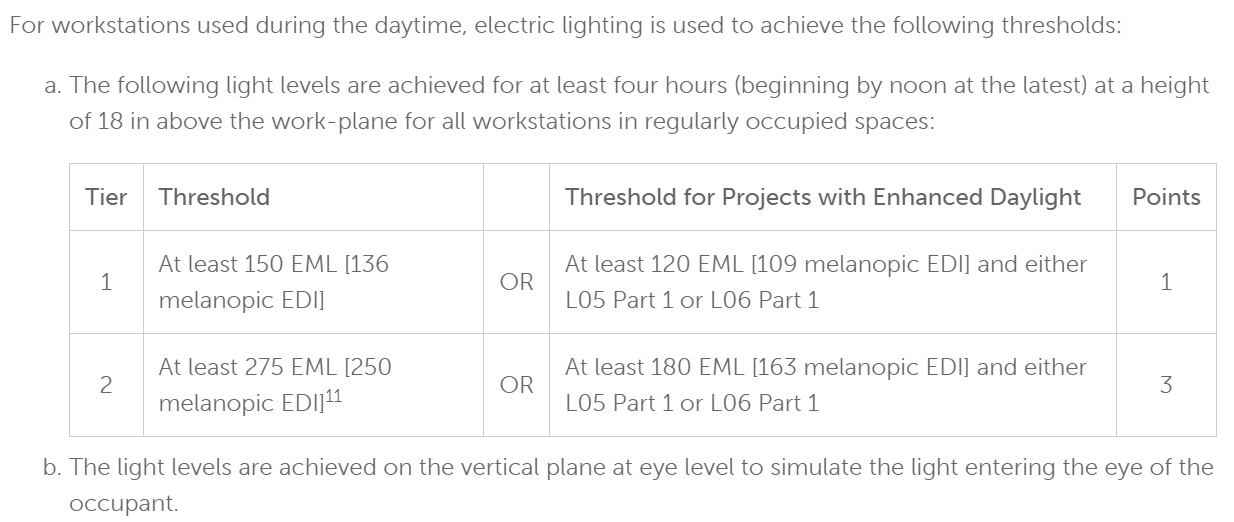
Lighting thresholds for workstations based on EML and melanopic EDI levels
What is Melanopic EDI?
Melanopic EDI quantifies how much light mimics natural daylight (D65 at 6500K) and impacts the intrinsically photosensitive retinal ganglion cells (ipRGCs), which regulate circadian rhythms. Unlike photopic lux, which measures illuminance based on vision-related light sensitivity, melanopic lux directly correlates with physiological effects on sleep-wake cycles.
MK350S Premium: A Reliable Solution for Circadian Lighting Measurement
✔ Directly Measures MEL Daylight Lux (Equivalent to Melanopic EDI) – The device can capture and store EML (Equivalent Melanopic Lux) readings, which can be converted into melanopic EDI based on WELL standards.
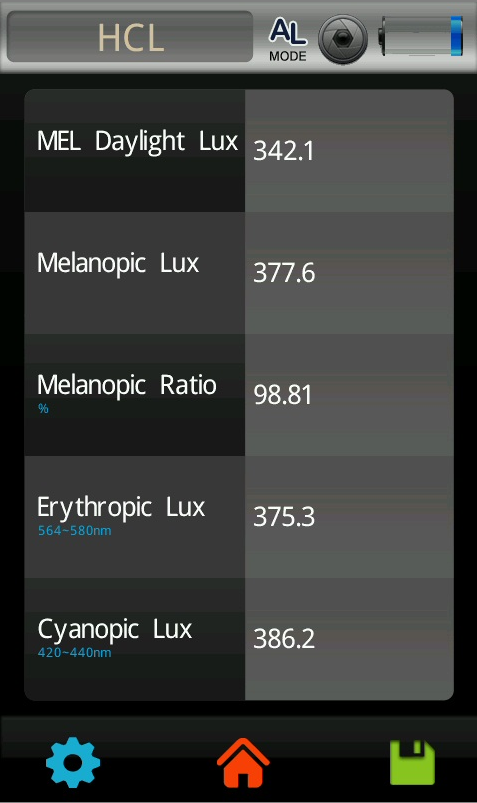
MK350S Premium can measure MEL Daylight Lux_equal to melanopic EDI
✔ Seamless EML to MEL Conversion – Since WELL certification uses melanopic EDI, conversion from EML is required. Using a standard LED light source, the conversion factor is typically 0.85:
MEL = EML × 0.85
Example: If EML = 100 lux, then:
MEL = 100 × 0.85 = 85 lux
✔ Integration with uSpectrum Software – The uSpectrum PC software provides instant readings of MEL Daylight Lux, ensuring that businesses can quickly evaluate their lighting’s circadian effectiveness.
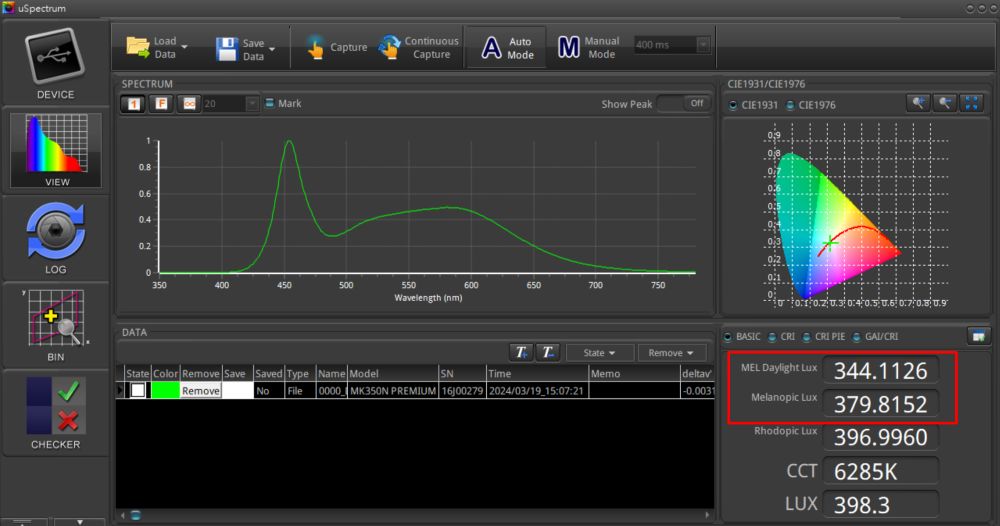
UPRtek uSpectrum PC software can also give out the reading of MEL Daylight Lux_equal to melanopic EDI
Why Choose UPRtek MK350S Premium?
✔ Accurate Spectral Analysis – Measures melanopic EDI and other circadian lighting metrics required for WELL certification.
✔ Portable & User-Friendly – Ideal for on-site evaluations by lighting professionals, architects, and WELL consultants.
✔ Supports WELL & Sustainable Building Standards – Helps businesses validate and optimize human centric lighting, ensuring compliance with global wellness initiatives.
Need Expert Consultation on Human Centric Lighting?
As businesses shift towards science-backed lighting solutions, it’s essential to use reliable measurement tools for WELL certification compliance. If you are looking to assess, optimize, or implement a human centric lighting strategy, UPRtek provides expert guidance and cutting-edge measurement solutions.
Contact us to learn how UPRtek MK350S Premium can support your WELL certification needs.
References
- https://www.abm.com/perspectives/how-human-centric-lighting-promotes-occupant-wellness?utm_source=chatgpt.com
- https://www.projectnekton.com/en/information/human-centric-lighting-in-offices/?utm_source=chatgpt.com
- https://www.projectnekton.com/en/information/human-centric-lighting-in-offices/?utm_source=chatgpt.com
- https://pmc.ncbi.nlm.nih.gov/articles/PMC7873560/?utm_source=chatgpt.com
- https://www.slc.philips.com/support/cases/office/edge?utm_source=chatgpt.com
- https://www.interact-lighting.com/en-us/customer-stories/cabr
- https://www.grandviewresearch.com/industry-analysis/human-centric-lighting-market-report
- https://www.researchgate.net/publication/365719477_Analyzing_Natural_Lighting_Conditions_from_the_Perspective_of_Biophilic_Design_in_Indoor_Office_Environments?utm_source=chatgpt.com
- https://www.mdpi.com/2075-5309/13/1/42?utm_source=chatgpt.com
- https://www.tandfonline.com/doi/full/10.1080/17508975.2024.2306273?utm_source=chatgpt.com
Other Posts:
- What is Human Centric Lighting? Development, Applications, and Solutions
- What Is a Grow Light? How It Works and Different from Regular Bulbs?
- What Color Grow Light is Best? Why Grow Lights Are Purple?
- What’s the Difference Between Grow Lights and Sunlight? Can They Replace the Sun?
- Cannabis Grow Lights: Which Light Is Best for Growing Cannabis?
Hot Product
Handbook Series
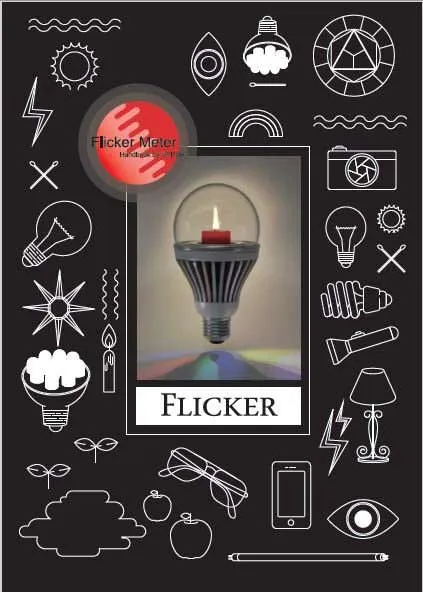
The Flicker Handbook
Everything thing you need to know about Flicker, an insidious, potentially serious lighting artifact impacting visual safety for public places like hospitals, offices, libraries, and more...
About UPRtek
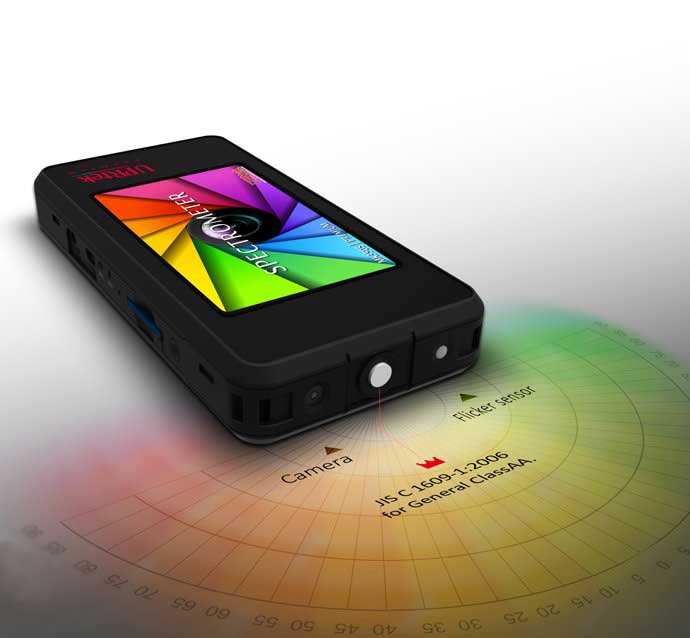
United Power Research and Technology
UPRtek (est. 2010) is a manufacturer of portable, high-precision light measurement instruments; Handheld Spectrometers, PAR meters, Spectroradiometers, Light Calibration Solutions.
UPRtek HQ, R&D and manufacturing are all based out of Taiwan, with Worldwide representation through our certified Global Resellers.
Latest Articles
Category
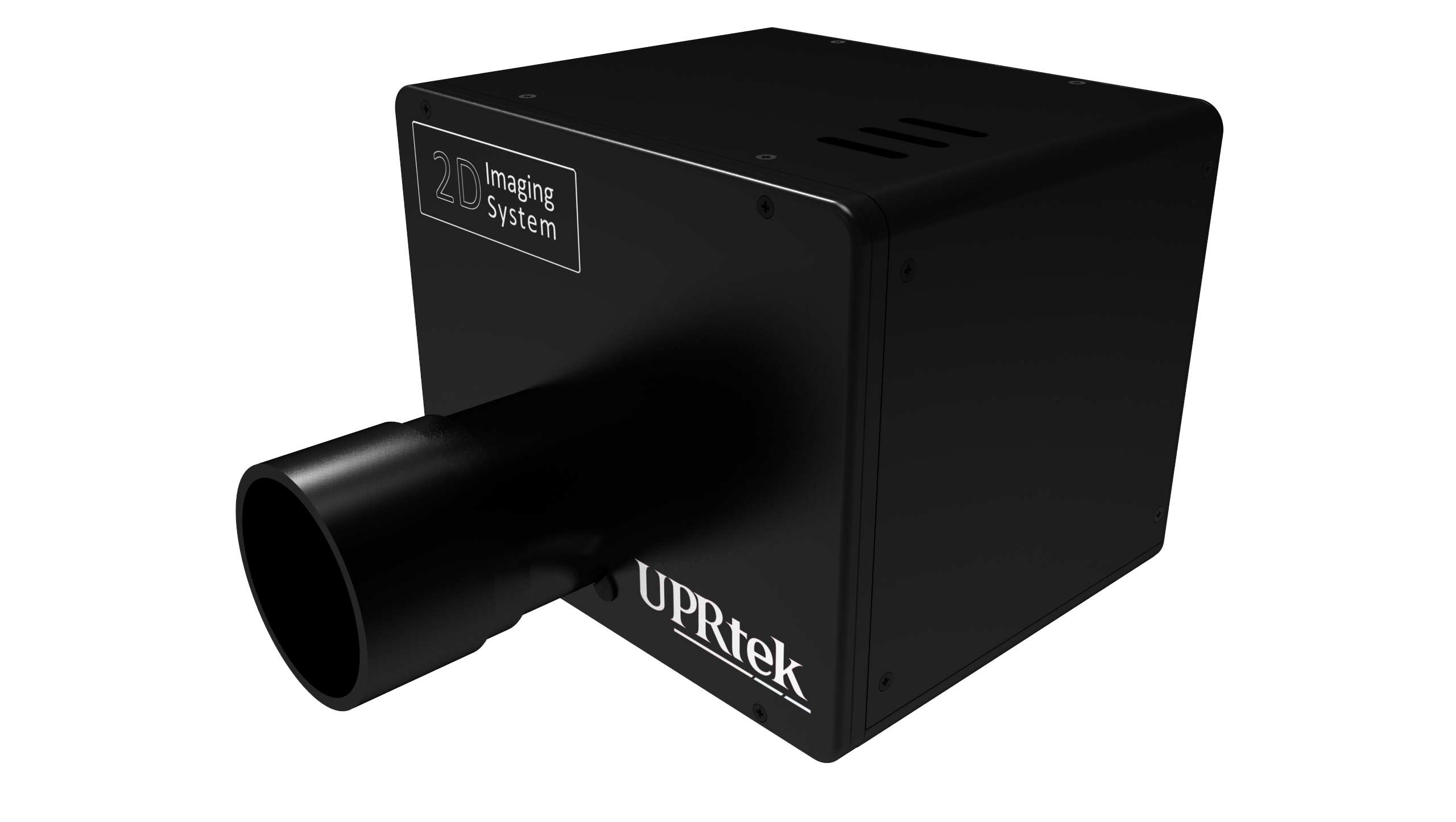
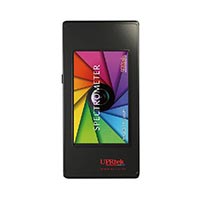
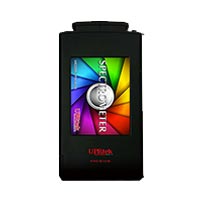
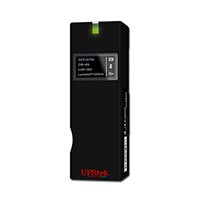
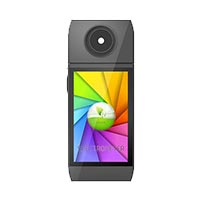
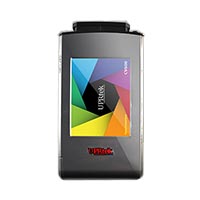
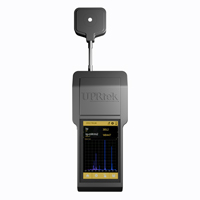
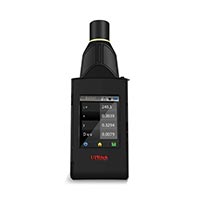
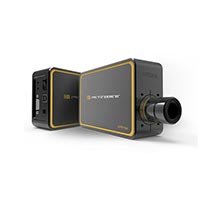
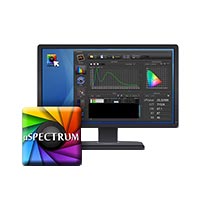

0 Comments